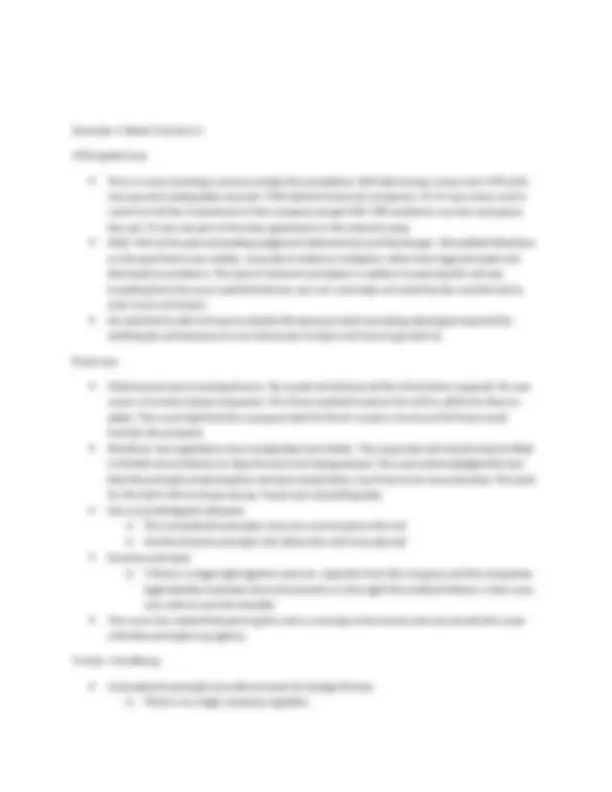




Study with the several resources on Docsity

Earn points by helping other students or get them with a premium plan


Prepare for your exams
Study with the several resources on Docsity

Earn points to download
Earn points by helping other students or get them with a premium plan
Community
Ask the community for help and clear up your study doubts
Discover the best universities in your country according to Docsity users
Free resources
Download our free guides on studying techniques, anxiety management strategies, and thesis advice from Docsity tutors
LAWS08134 Business Entities-Piercing the Corporate Veil
Typology: Study notes
1 / 4

This page cannot be seen from the preview
Don't miss anything!



Piercing the Corporate Veil Adam v Cape Industries o 3 companies, Cape the parent company. They had mines in South Africa, but the company was incorporated in England. The CAPASCO, wholly owned by Cape and did they did the marketing. NAAC who was incorporated in the US< It was also wholly owned by Cape and subsequently liquidated. AN action was brought because of an asbestos claim against Cape, CAPASCO and NAAC and the action was settled, but the English company claimed that the court had no jurisdiction. Before the first action was settled a second was raised. NAAAC went into liquidation and a new company CPCC was created in Lichtenstein. All the shares were owned by M who was the boss of NAAC Fault judgement in the US was unsuccessful. 3 points were argued. Single economic unit argument, the company should be treated as a single unit The idea that member of a corporate group lost they legal identity and became one was rejected. The notion that Salomon case should not be applied because it would lead to injustice was also rejected. Corporate veil point Applied the test of Wolf v Strathclyde and led that it was not possible to lift the corporate veil just because you want to avoid FUTURE liabilities. It does not matter whether this is desirable or not, it’s the law NAAC was a CAPASCO agent NAAC was not an agent, it was a company in its own right Wrongful/fraudulent trading o Wrongful trading: Directors of the company continue trading although the directors know or should know that the company can’t pay its debts. As a result, in the case of liquidation, the creditors can apply to the court that the directors have to make a contribution to the assets of the company. o One does not look at the issue with the benefit of hindsight o There is a defence of doing anything reasonable in the situation to mitigate the loss o Reasonable person test of knowledge, skill and experience. The second part was the individual knowledge, skill and experience of the person. See the insolvency act. There might be different contributions from different directors. Lifting/Piercing the Veil o To understand this we have to look at DHN Food Distributors 1976 Corporate group 4 companies. DHN groceries business part. It owned all the shares of two other companies. Bronze limited, owned the premises on where DHN traded it did not trade. Transport the third company did the transport solely working for DHN. 3 companies had a the same directors. They sued for business disruption and lost. DHN was not an owner, the companies all 3 went into liquidation. Lord denning stated that they should not be treated separately
he made a comparison to a partnership. A case of very special character. In this case separate legal identity did not matter. o A few year later there was the case of Woolfson There was retail business of bride attire in 5 businesses. The premises were owned by W and SHL. Owner had 3 and SHL 2 shares. WO owned 999 of 1000 shares of C and he was also the sole director of SHL Council wanted to acquire SHL. He wanted C to be compensated. The HL ruled that this was not possible and distinguished DHN This case is important because it set out the requirements to pierce the veil Special circumstances mist exist where the company is made a façade to conceal a true fact.
EU it passes company law directives Westminster Register of Companies Financial Conduct Authorities Take over period and statutory authority